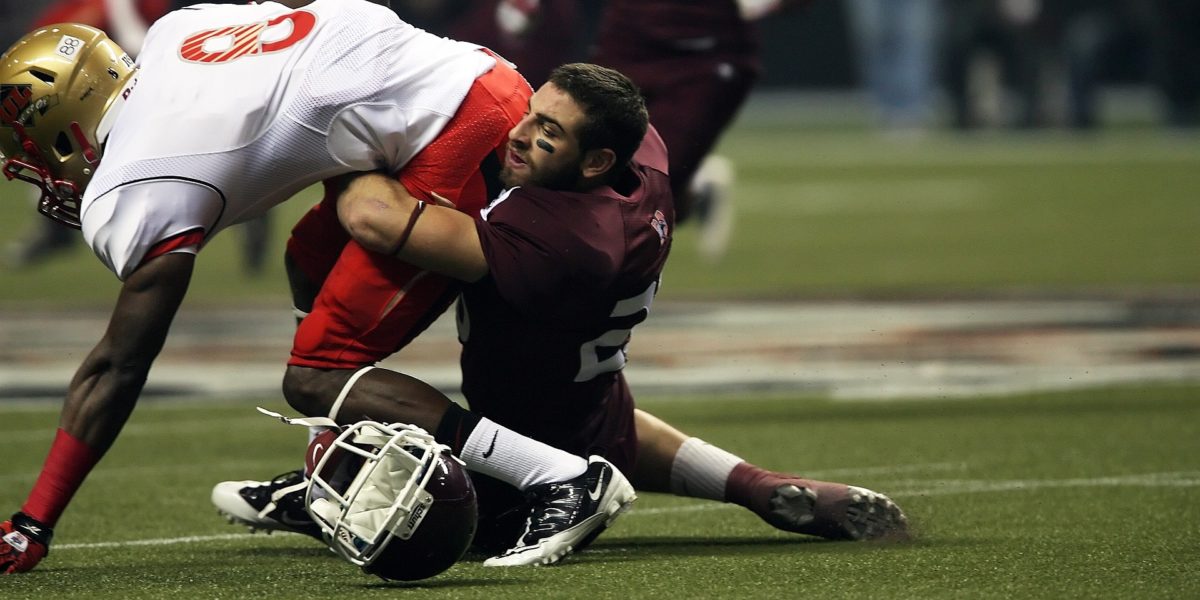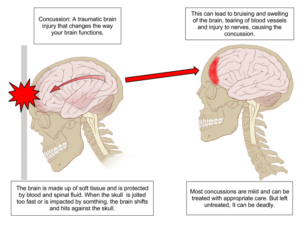Traumatic brain injuries (TBI) are injuries to the brain due to some kind of trauma and are more commonly called concussions. All TBI are unique and are not created equally. “Sports Medicine,” “Biomechanics of Concussions,” and “Concussion Connection” shed some light on subject and determine what combination of forces and accelerations tend to cause the most damage to the brain.
There are two major forces that are involved in TBI: contact and inertial.Contact is the force that’s produced from the head striking an object. Inertial is the force due to head motions without the head striking an object, and is generally the primary cause of injury. These rapid head motions are due to rotational acceleration which causes shear forces in the brain. Shear forces are two forces working in opposite directions parallel to the surface of the material that cause the material to deform. These shear forces, which is the main cause of TBI, cause an increase in brain pressure, but are not as devastating as the brain tissues deformation due to this force. Due to the brain’s softness and nearly 75% composition of water, it tends to resist changes to its shape with transient pressure, but is deformed more readily due to shear forces. There are current studies underway that study how this rotational acceleration transfers not only to the brain tissue but to other important areas such as vascular tissues. The rotational acceleration can be broken down into three separate planes: lateral, axial, and coronal. The lateral plane is a vertical plane that splits the body into left and right sides and describes forward and backward movement. The axial plane is a horizontal plane that splits the body into upper and lower parts and primarily describes rotations. The coronal plane is a vertical plane that splits the body into front and back and describes side to side movements. The most devastating TBI result from rotational acceleration on the lateral plane and increases the likeliness of losing consciousness.
The forces applied to the brain resulting in a TBI occur on the scale of milliseconds which makes it increasingly difficult to simulate TBI in a lab setting. The brain reacts differently post mortem than in vivo which creates more difficulty in studying this common injury. It has been found that repeated TBI can lead to debilitating neurodegenerative diseases down the road. This discovery has recently come into focus in athletics within the last 10 years.
The increasing awareness has been in part due to the National Football League’s (NFL) suppression of knowledge about accumulating TBI that lead to neurodegenerative diseases such as chronic traumatic encephalopathy (CTE) brain degeneration. This story was most recently highlighted in the 2015 film Concussion starring Will Smith. Concussion follows the story of Dr. Bennet Omalu a forensic neuropathologist who discovered the life altering effects of chronic traumatic encephalopathy brain degeneration by studying the brains of NFL stars post mortem. This is just one extreme case of the effects of TBI. As stated before, TBI are not all equally devastating. With proper care and protection TBI may have little to no impact on the life of a patient. Increasing technologies are making it easier to study these injuries and develop new protective equipment.
Featured image licensed under Pixabay License


